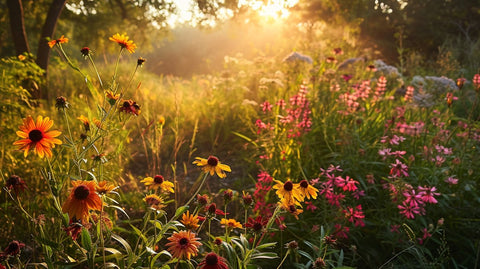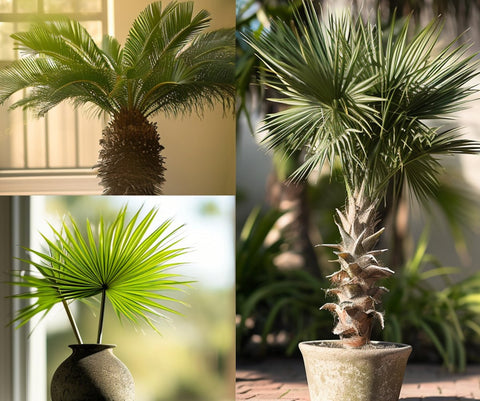Florida Native Plants: A Guide to Creating a Sustainable Landscape
Have you ever considered incorporating native plants into your Florida landscape? Not only do these plants bring beauty and vibrancy to your outdoor space, but they also play a crucial role in preserving Florida's diverse ecosystems. In this comprehensive guide, we will delve into the world of Florida native plants, exploring their benefits, habitat requirements, and care tips. Join us on this journey to discover the wonders of Florida's native plant kingdom.

1. Definition and Importance of Native Plants
Native plants, as the term suggests, are species that occur naturally in a particular region or ecosystem. For Florida, these plants have evolved over thousands of years, adapting to the unique climate and soil conditions of the state. This makes them not only well-suited to survive in Florida's landscapes but also essential for maintaining a balanced ecosystem.
One of the key benefits of using native plants in landscaping is their resilience. These plants have already acclimated to the local climate, requiring less water, fertilizer, and pesticides compared to non-native species. By choosing native plants, you can create a sustainable landscape that conserves water, reduces pollution, and supports local wildlife.
1.1 Intriguing Facts about Florida's Diverse Ecosystem
Florida is home to an incredible array of ecosystems, ranging from wetlands and prairies to pine scrub and hardwood hammocks. Did you know that the state has more than 4,000 native plant species? This diversity not only adds to Florida's natural beauty but also provides essential habitats for various animal species, including threatened and endangered ones.

2. Native Plants in Florida's Landscapes
When it comes to landscaping, native plants offer numerous advantages over non-native species. They require less water, are more resistant to pests and diseases, and provide food and shelter for local wildlife. Some popular native plants commonly found in Florida include:
2.1 Firebush (Hamelia patens)

With its vibrant red-orange flowers, firebush is a favorite among gardeners and hummingbirds alike. This shrub thrives in full sun and well-drained soil.
2.2 Saw Palmetto (Serenoa Repens)

Saw palmetto is a native palm tree that adds a tropical touch to any landscape. It tolerates drought and is an excellent choice for creating a low-maintenance garden.
3. Florida's Unique Native Plant Habitats
Florida's ecosystems offer a wide range of habitats where native plants flourish. Let's take a closer look at some of these habitats and the native plants that thrive in each:
3.1 Wetlands and Marshes

Wetlands and marshes are critical ecosystems for Florida's wildlife. Native plants like pickerelweed, sawgrass, and cypress trees provide habitat for birds, mammals, and reptiles.
3.2 Pine Flatwoods

Pine flatwoods are dominated by longleaf pines and palmetto understory. Native plants adapted to these habitats include wiregrass, gallberry, and scrub oak.
4. Popular Florida Native Plants
In this section, we will highlight some popular Florida native plants that offer not only beauty but also environmental benefits:
4.1 Attractive Flowering Plants
Florida boasts an abundance of flowering plants that can transform any landscape into a colorful paradise. Some popular choices include the native wildflowers like blanketflower (Gaillardia pulchella) and coreopsis (Coreopsis spp.).
4.2 Drought-Tolerant Native Options
In a state known for its hot and dry summers, it's crucial to choose plants that can withstand periods of drought. Native species such as coontie (Zamia pumila) and beach sunflower (Helianthus debilis) are excellent choices for sustainable gardening.
4.3 Native Plants that Attract Pollinators and Wildlife
Creating a garden that welcomes pollinators like butterflies and bees is not only beautiful but also vital for our ecosystem. Native plants like milkweed (Asclepias spp.) and black-eyed Susan (Rudbeckia hirta) provide nourishment and shelter for these essential species.
5. Caring for Florida Native Plants
Proper care is crucial to ensure the success of your Florida native plant garden. Here are some essential care tips:
5.1 Soil Requirements and pH Levels
Most native plants prefer well-drained soil with a slightly acidic to neutral pH. Conduct a soil test to determine the specific pH requirements of your chosen species and make necessary amendments.
5.2 Optimal Watering Techniques
While native plants are generally more drought-tolerant, proper watering is still essential, especially during establishment. Water deeply but infrequently, allowing the soil to dry out between waterings.
5.3 Best Practices for Fertilizing and Pruning
Native plants typically require minimal fertilization, as they have evolved to thrive in nutrient-poor native soils. Use organic fertilizers sparingly, and avoid excessive pruning, especially during the flowering period.
6. Preservation and Conservation Efforts
Preserving and conserving Florida's native plant populations is crucial for maintaining the state's unique biodiversity. Several organizations are actively involved in promoting native plant conservation, including the Florida Native Plant Society and the Florida Wildflower Foundation. Consider supporting these organizations to contribute to the preservation of Florida's natural heritage.
7. Overcoming Challenges with Native Plant Gardening
Like any gardening endeavor, native plant gardening comes with its share of challenges. Here are some common issues and strategies for overcoming them:
7.1 Common Pests and Diseases
Aphids, whiteflies, and fungal diseases can be a nuisance in native plant gardens. Regular monitoring, early detection, and the use of organic pest control methods can help keep these issues under control.
7.2 Strategies for Managing Invasive Species
Invasive species can quickly take over native plant habitats, threatening biodiversity. Regular weeding, installing barriers, and promoting native plant species can help manage invasive plants effectively.
8. Choose Local Plants
Incorporating native plants into your Florida landscape not only adds beauty and diversity but also helps restore and preserve Florida's unique ecosystems. By choosing native plants, you can create a sustainable and vibrant environment that supports local wildlife and conserves resources. Let's work together to make Florida's landscapes a haven for native plants and wildlife.































Comments (0)
There are no comments for this article. Be the first one to leave a message!